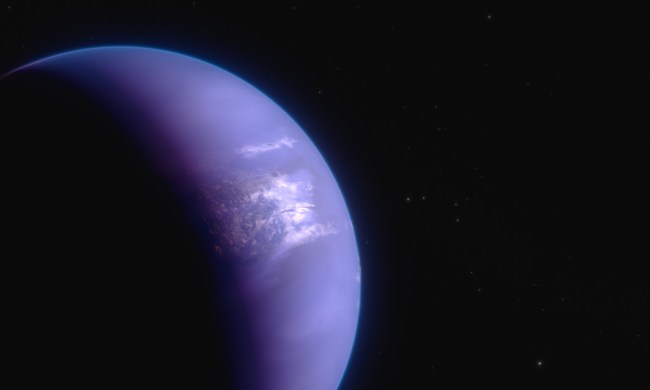Astronomers from ETH Zurich have predicted that an Earth-like planet could exist orbiting the nearest sun-like stars to Earth, called the α Centauri A/B binary. Though they weren’t looking for direct evidence that such a planet exists, they were able to predict what it would be like if it did.
Most exoplanet research to date focuses on discovering exoplanets orbiting around distant stars, using techniques like the transit method which looks at dips in a star’s brightness when a planet passes between it and us. From these small dips in brightness, researchers can calculate features like the size of a planet and how far it orbits from its star, and from this, they can infer things like the planet’s surface temperature. The transit method tends to be good at spotting big exoplanets which orbit close to their stars, but less good for spotting smaller, Earth-sized planets.

But this new research takes a different approach. Instead of searching for evidence of a planet orbiting a star, it takes what we do know about a star system and asks: If there were a planet here, what would it be like? The researchers looked at the nearby Alpha Centauri system, which consists of three stars: α Centauri A, α Centauri b, and α Centauri C (also known as Proxima Centauri). Proxima Centauri is known to host exoplanets, but the other two stars are not. Using computer modeling, the researchers decided to investigate what a hypothetical rocky planet in the α Centauri A/B system that they called α-Cen-Earth would be made up of.
“If it exists, α-Cen-Earth is likely to be geochemically similar to our Earth, they predict, with a mantle dominated by silicates, but enriched in carbon-bearing species such as graphite and diamond,” ETH Zurich writes. “The capacity for water storage in its rocky interior should be equivalent to that of our home planet. According to the study, α-Cen-Earth would also differ in interesting ways from Earth, with a slightly larger iron core, lower geological activity, and a possible lack of plate tectonics. The biggest surprise, however, was that the early atmosphere of the hypothetical planet could have been dominated by carbon dioxide, methane, and water — similar to that of Earth in the Archean eon, 4 to 2.5 billion years ago when first life emerged on our planet.”
These findings suggest that an Earth-like planet orbiting these nearby stars is distinctly possible and that such a planet could be habitable. In future research, astronomers now have an idea of what to look for when searching out potentially habitable exoplanets. “Together with the new observational power that can be expected in the years to come, there is legitimate hope that one or several exoplanets orbiting α Centauri A/B will join the nearly 5,000 exoplanets that have been discovered since 1995,” ETH Zurich wrote.
The research is published in The Astrophysical Journal.



